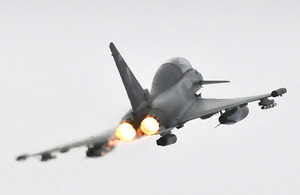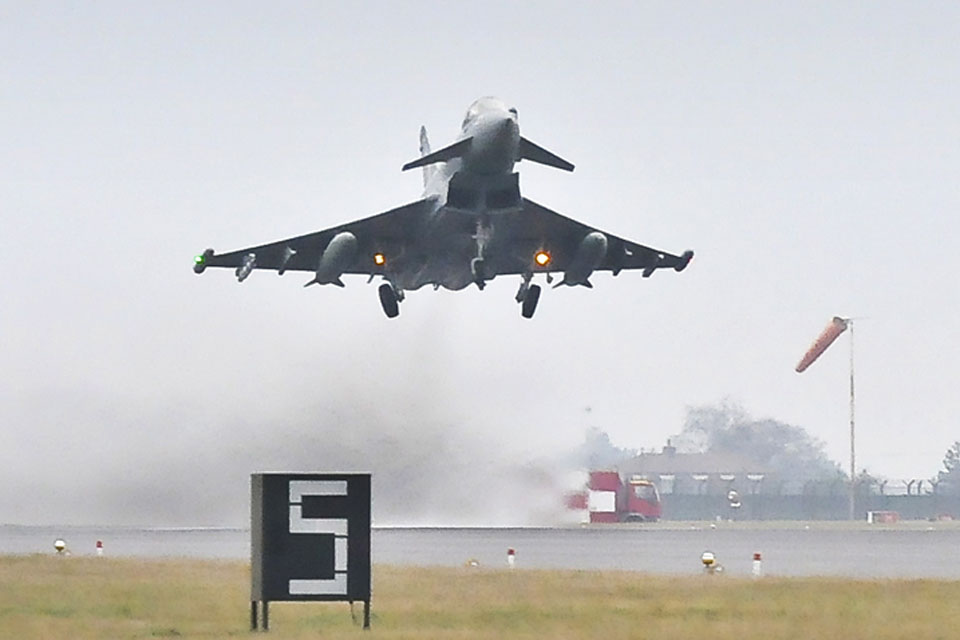RAF Typhoons scrambled over UK
Two RAF Typhoons were launched yesterday evening to intercept an aircraft that was transmitting an emergency signal and could not be identified via radio.

A 3 Squadron Typhoon aircraft from RAF Coningsby during Exercise Taurus Mountain - a Quick Reaction Alert training sortie [Picture: Senior Aircraftwoman Sally Raimondo, Crown Copyright/MOD 2012]
The RAF jets are part of the Quick Reaction Alert (QRA) force which has Typhoon fighter aircraft and crews held at continuous ground-readiness, 24-hours-a-day, seven-days-a-week, at RAF Coningsby in Lincolnshire, and at RAF Leuchars in Fife.
The QRA force’s purpose is to identify any aircraft approaching or within national airspace without prior approval or not having identified themselves and which cannot be identified by any other means, i.e. the aircraft is not talking to civilian or military Air Traffic Control, has not filed a flight plan and is not transmitting a recognisable secondary surveillance radar code.
QRA aircraft can take off within minutes to protect UK sovereign airspace.
Last night, two QRA Typhoons were scrambled from RAF Coningsby when a small civilian aircraft was transmitting inadvertently on an emergency frequency and was out of radio communication with Air Traffic Control.

A 3 Squadron Typhoon aircraft takes off from RAF Coningsby during Exercise Taurus Mountain [Picture: Senior Aircraftwoman Sally Raimondo, Crown Copyright/MOD 2012]
Authorisation was given for one of the Typhoons to transit at supersonic speed over land, which resulted in the sonic boom heard by the public.
The Typhoons intercepted a civilian Gazelle helicopter in the vicinity of Bristol, and, after identification, the helicopter successfully re-established communications with Air Traffic Control.
The reason for the emergency signal and communications failure is yet to be determined.
The MOD will be providing all available information on the intercept to the Department for Transport who will lead on the investigation process in order to complete any follow-up action if considered appropriate, and to also try and reduce the chance of any repetition of this type of incident.
Deterrence is a key part of our Quick Reaction Alert posture. The RAF’s air defence capability to detect and deter aircraft approaching UK sovereign airspace is just one aspect of a multilayered approach that the UK Government takes to protect UK and NATO-monitored airspace.